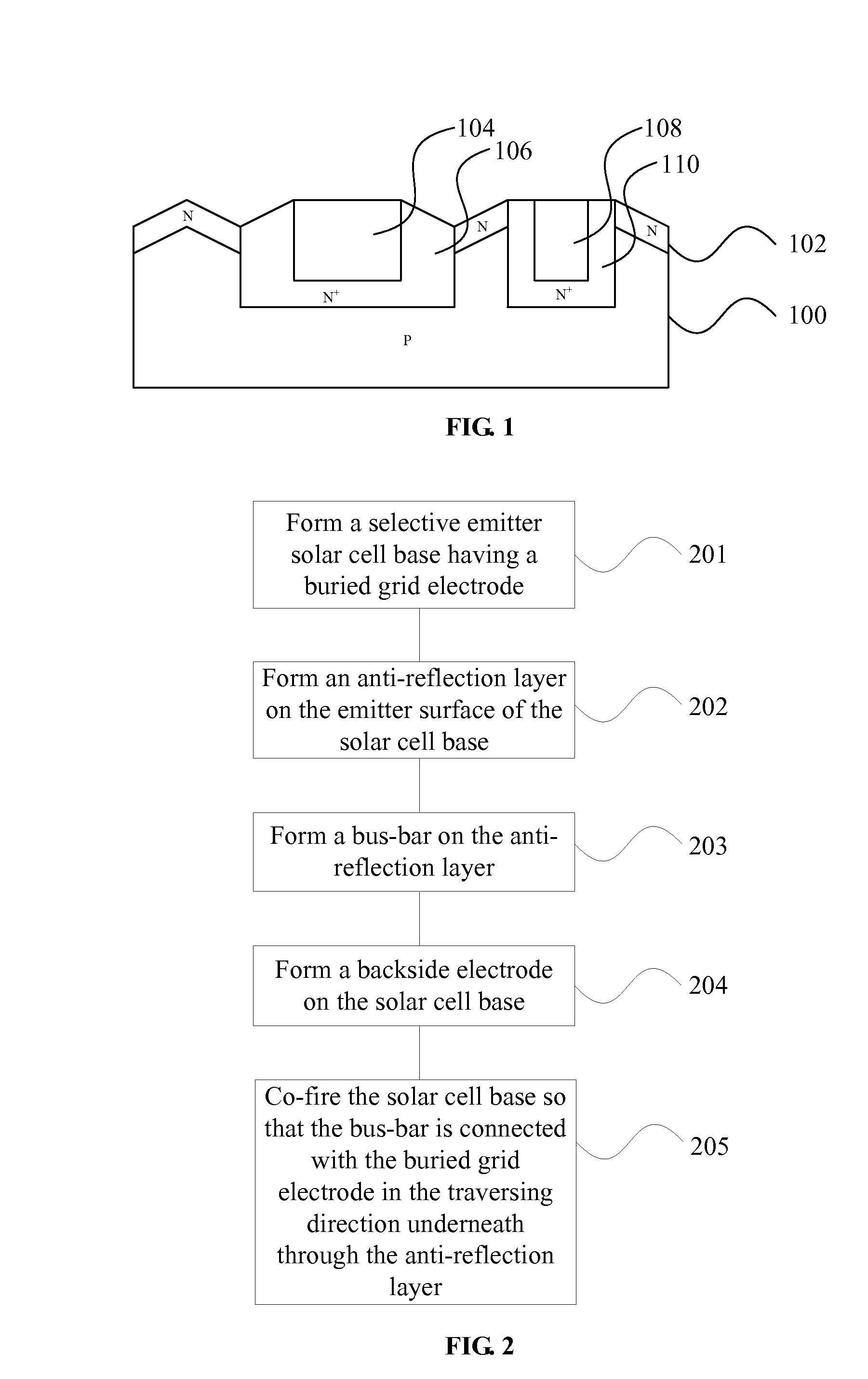Selective Emitter Solar Cell and Fabrication Method Thereof
a solar cell and emitter technology, applied in the field of selective emitter solar cells, can solve the problems of low conversion efficiency in the industry, usually less than 20%, and the width of the emitter can be reduced, and the area that is unnecessarily taken may be reduced, so as to improve the conversion efficiency of the solar cell panel, the effect of reducing the area of the emitter
- Summary
- Abstract
- Description
- Claims
- Application Information
AI Technical Summary
Benefits of technology
Problems solved by technology
Method used
Image
Examples
Embodiment Construction
[0047]In the method for fabricating a selective emitter solar cell according to the invention, an anti-reflection layer is formed on a surface of a selective emitter solar cell base. The selective emitter solar cell base has buried grid electrodes. Bus-bars are formed on the anti-reflection layer. The Bus-bars are connected with the buried grid electrodes used as emitters in the traversing direction underneath through the anti-reflection layer. Therefore, the emitters and the bus-bars can be made separately. The width of the emitters can be reduced according to actual needs, the area that is unnecessarily taken may be reduced, the effective area for a solar cell panel to receive sunlight may be increased, the contact resistance between the emitters and emitter grooves may be reduced, which may lead to an improved conversion efficiency of the solar cell panel.
[0048]In addition, in the method for fabricating a selective emitter solar cell, a lowered doping concentration of the semicon...
PUM
 Login to View More
Login to View More Abstract
Description
Claims
Application Information
 Login to View More
Login to View More - R&D
- Intellectual Property
- Life Sciences
- Materials
- Tech Scout
- Unparalleled Data Quality
- Higher Quality Content
- 60% Fewer Hallucinations
Browse by: Latest US Patents, China's latest patents, Technical Efficacy Thesaurus, Application Domain, Technology Topic, Popular Technical Reports.
© 2025 PatSnap. All rights reserved.Legal|Privacy policy|Modern Slavery Act Transparency Statement|Sitemap|About US| Contact US: help@patsnap.com



